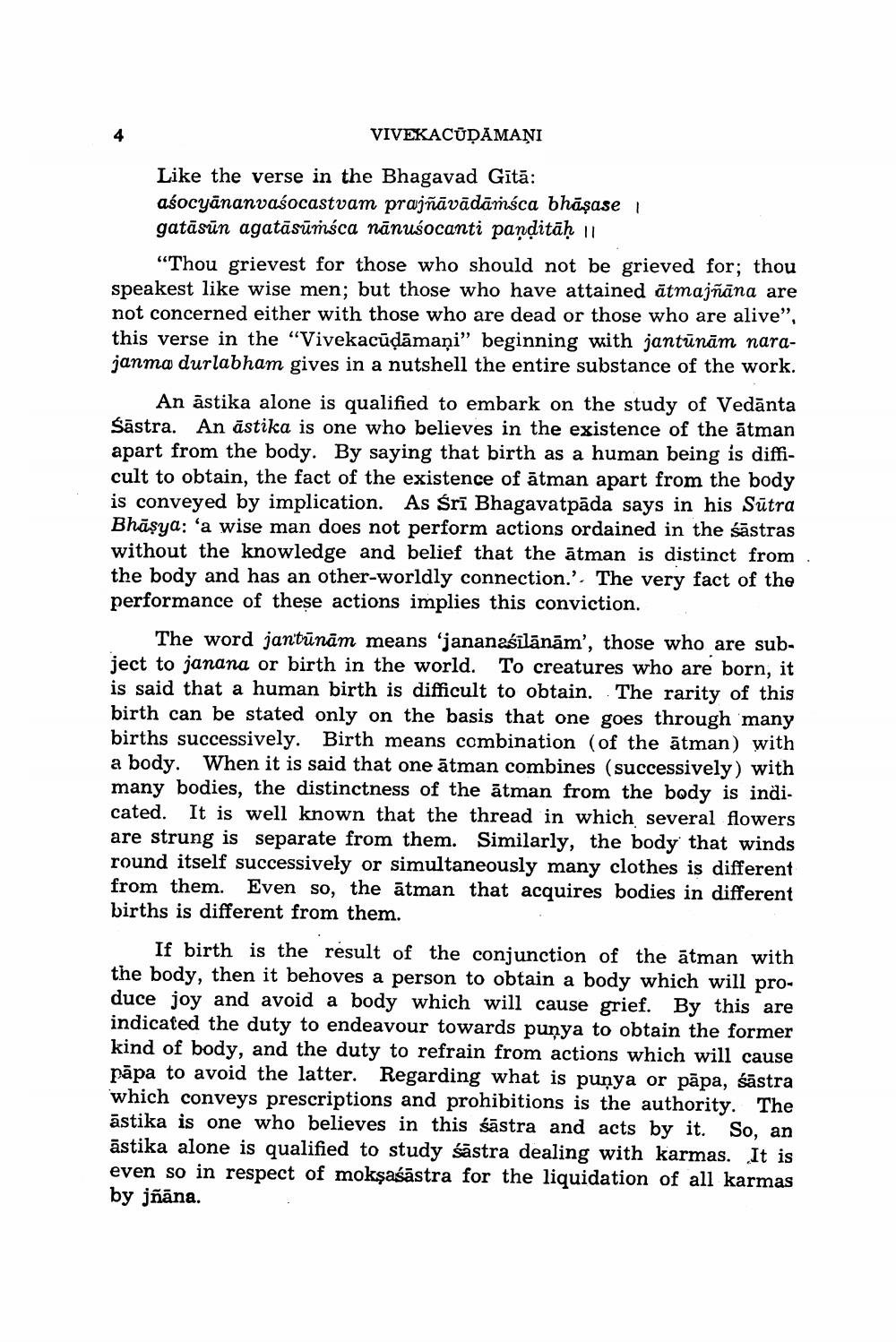________________
4
VIVEKACŪDAMANI
Like the verse in the Bhagavad Gitā:
aśocyānanvaśocastvam prajñāvādamsca bhāşase | gatāsūn agatāsūṁśca nānuśocanti panditāḥ ||
"Thou grievest for those who should not be grieved for; thou speakest like wise men; but those who have attained atmajñāna are not concerned either with those who are dead or those who are alive", this verse in the "Vivekacuḍāmaņi" beginning with jantūnām narajanma durlabham gives in a nutshell the entire substance of the work.
An astika alone is qualified to embark on the study of Vedānta Sastra. An astika is one who believes in the existence of the ātman apart from the body. By saying that birth as a human being is difficult to obtain, the fact of the existence of atman apart from the body is conveyed by implication. As Śrī Bhagavatpada says in his Sūtra Bhāṣya: 'a wise man does not perform actions ordained in the sastras without the knowledge and belief that the atman is distinct from the body and has an other-worldly connection.'. The very fact of the performance of these actions implies this conviction.
The word jantunām means 'jananaśīlānām', those who are subject to janana or birth in the world. To creatures who are born, it is said that a human birth is difficult to obtain. The rarity of this birth can be stated only on the basis that one goes through many births successively. Birth means combination (of the atman) with a body. When it is said that one ātman combines (successively) with many bodies, the distinctness of the atman from the body is indicated. It is well known that the thread in which several flowers are strung is separate from them. Similarly, the body that winds round itself successively or simultaneously many clothes is different from them. Even so, the atman that acquires bodies in different births is different from them.
If birth is the result of the conjunction of the atman with the body, then it behoves a person to obtain a body which will produce joy and avoid a body which will cause grief. By this are indicated the duty to endeavour towards punya to obtain the former kind of body, and the duty to refrain from actions which will cause pāpa to avoid the latter. Regarding what is punya or pāpa, śāstra which conveys prescriptions and prohibitions is the authority. The ästika is one who believes in this sastra and acts by it. So, an ästika alone is qualified to study sastra dealing with karmas. It is even so in respect of mokşaśāstra for the liquidation of all karmas by jñāna.




